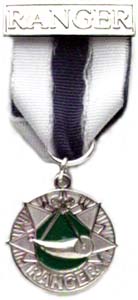These requirements became effective on June 1, 2014.
To see the requirements with the changes highlighted, Click here.
To see the previous requirements, Click here.
- Cave Exploration
- Learn about caving
- Write the National Speleological Society (NSS) to request information about caving and information about caves and cavers near you.
- Learn about the different types of caves.
- Learn about caving courtesy, caving do's and don'ts, and what the BSA policy is on cave exploring.
- Read at least one book about caving.
- Knots
- Learn the following knots used in caving:
- Endline knots:
- bowline,
- figure eight,
- figure eight on a bight
- Midline knots:
- bowline on a bight
- butterfly
- Joiner knots:
- water knot,
- fisherman,
- figure eight on bend
- Ascending knots:
- Prusik knot
- Endline knots:
- Teach these knots to your crew, another crew, a Cub Scout or Boy Scout unit, or another group.
- Learn the following knots used in caving:
- Ropes
- Learn about the different types of ropes available for climbing and caving and explain the uses of each and the characteristics of each.
- Learn proper climbing rope care. Know and practice proper coding and storage.
- Know how to keep proper records on climbing rope and how to inspect it for wear and damage. Know when to retire a rope.
- Using the knowledge acquired above, make a tabletop display or a presentation for your crew, another crew, a Cub Scout or Boy Scout unit, or another group.
- Rappelling and belaying
- Demonstrate that you know how to properly and safely rappel a distance of at least 30 feet.
- Demonstrate that you know how to ascend a rope using mechanical ascenders or Prusik or other ascending knots. Ascend at least 30 feet.
- Know and explain the differences, advantages, and disadvantages of single rope (SRT) and double rope (DRT) for rappelling and belaying.
- Outfitting
- Visit a sporting goods store or NSS-affiliated organization or have them make a presentation to your crew so you can learn about personal caving gear, including helmets, light sources, backup lighting sources, clothing, boots, cave packs, etc.
- Find out what the American National Standards Institute requirements are for helmets.
- First aid
- Make a list of what you need in your personal cave pack. Include your personal first aid kit and cave survival gear.
- Learn what crew equipment is, including a first aid kit, caving ropes, and ascending equipment.
- Help make a first aid kit for your crew or group and demonstrate that you can keep it up.
- Demonstrate to your crew, another crew, a Cub Scout or Boy Scout unit, or another group how to construct both a personal and crew first aid kit.
- Caves
- Learn about the many types of cave formations.
- Make a tabletop display or presentation on cave formations and caving conservation for your crew, another crew, a Cub Scout or Boy Scout unit, or another group. Include practices such as proper carbide removal; care of walls, ceiling, and formations; and principles of Leave No Trace.
- Find a cave you would like to visit; get permission to enter it; make a trip plan including cave location, a list of participants, expected time in the cave, expected date and time of return, and an emergency contact; and then go in the cave, led by a qualified caver.
- From a cave expert, learn about natural and fabricated hazards such as mudslides, loose rocks, pits, deep water, critters, complex routes, wooden ladders, and flooding.
- Maps
- Using a three-dimensional cave map, learn what the standard map symbols represent.
- Using the knowledge above, make a tabletop display or presentation for your crew, another crew, a Cub Scout or Boy Scout unit, or another group.
- Learn about caving
Cave Safety
Caves can be dangerous if you are not properly trained or equipped. Here are some cave safety tips:
- Join an experienced group for proper training and safe caving.
- Never go caving alone. At least three cavers are a minimum.
- Always carry three sources of light.
- Don't attempt caves beyond your ability.
- Use proper gear, including a properly fitted helmet and suitable clothes.
- Leave word with family or friends about your trip plan, including cave location and expected return time.
- Always use the safer alternative when you have an option.
| Checklist for use in working on these requirements: | Format | |
|---|---|---|
| Word Format | PDF Format | |
Source: Venturing Awards and Requirements
(34784 - SKU 618767) and
www.scouting.org/filestore/venturing/pdf/Ranger_Award_Requirements.pdf.








